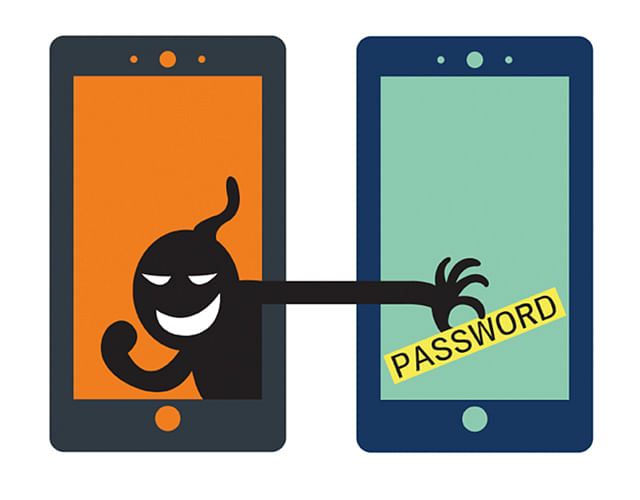
We tweet about where we’re travelling to, check in on Foursquare, post our photos on Instagram, and share our entire life on Facebook. Well, everybody is doing it and it’s not like we’re famous. Nobody is interested in hacking into our online accounts. Or so we thought.
You may not have any juicy secrets or nude photos, but hackers are interested in your personal information because they want to crack your password. Besides leading to loss of privacy, it can also create a big hole in your pocket.
Find out how you can protect yourself while using social media. Shirley Wong, co-chair of the Cyber Security Awareness Alliance, shares 10 handy tips.
1 KNOW WHAT YOU’VE POSTED ABOUT YOURSELF
“One common way hackers break into financial or other accounts is by clicking the ‘Forgot your password?’ link on the account login page,” says Shirley. Hackers search for the answers to security questions – such as your birth date, home town, secondary school or mother’s maiden name – so they can reset your password and gain access to your account.
In fact, using publicly available information was one of the ways iCloud hackers managed to access the accounts of many celebrities last year.
To protect yourself, opt to make up your password question if the site allows it. “Don’t draw the answer from material that anyone can easily find with a quick search,” warns Shirley. You can also activate a two-factor authentication if your accounts have that feature.
2 DON’T BLINDLY TRUST YOUR “FRIENDS”
A message may not really be who it says it’s from. Hackers can break into accounts and send messages that look like they’re from your friends. This includes invitations to join new social networks or a gift card purchase.
This was how 33 cases of fraud involving iTunes gift cards were perpetrated through mobile messaging platform Line last September. After accessing a victim’s Line account, the crook posed as the victim to send messages to his friends, asking them to buy iTunes gift cards and send the redemption codes over the app. The crook then redeemed the value of the gift cards.
“If you suspect a message is fraudulent, use another method to contact your friend to find out,” says Shirley.
3 PROTECT YOUR FRIENDS’ EMAIL ADDRESSES
When you join a new social network, you may receive a request to enter your e-mail address and password to find out if your contacts are on the same network. Don’t allow the network to scan your e-mail address book.
“The site may use this information to send e-mail messages to everyone in your contact list or even everyone you’ve ever sent an e-mail to, with that e-mail address,” highlights Shirley. While social networking sites should openly declare their intentions so you can make an informed decision, some sites conveniently omit this.
4 AVOID CLICKING ON A LINK TO A SOCIAL NETWORKING SITE VIA E-MAIL OR ANOTHER WEBSITE
Type the address of the site directly into your browser instead. Or, use your personal bookmarks. If you click on a link to a social networking site through an e-mail or another website, you may actually be entering your account name and password into a fake site where your personal information could be stolen.
5 CHOOSE YOUR ONLINE FRIENDS CAREFULLY
Forget about building an impressive friends list. Be selective about who you accept as a friend on any social network. “Identity thieves may create fake profiles in order to get information from you,” warns Shirley.
6 BE PICKY ABOUT YOUR SOCIAL NETWORK
Evaluate the site you plan to use and make sure you understand the privacy policy. Find out if the site monitors content that people post. Remember, you’ll be providing personal information to this website. Ask yourself: Would you freely share your credit card details? “Use the same criteria you would use to select a site where you’d enter your credit card details,” advises Shirley.
7 ASSUME THAT EVERY POST IS PERMANENT
Don’t be fooled into thinking that you can just delete your account if you feel like it. “Even if you do, anyone on the Internet can easily print photos or text about you, or save images and videos of you to a computer,” says Shirley. Yes, anything you post on the Internet can live forever and haunt you in years to come.
8 BE CAREFUL ABOUT INSTALLING EXTRAS
Many social networking sites allow you to download third-party apps that let you do more with your personal page. Shirley says criminals sometimes use these apps to steal your personal information.
So, just like how you’d take safety precautions when you download a program or file from the web, practise the same discretion with third-party apps.
9 CLICK CAREFULLY
Many of us know we should not click on suspicious-looking links in e-mails, because spam messages and viruses have been spread that way for ages. However, we tend to be less cautious when it comes to checking out links sent on social networks or direct/private messages from our friends. “Even if these links come to you in messages supposedly from your friends, you should treat them as you would links in e-mail messages,” reminds Shirley.
Be careful with attachments, too. Don’t open one unless you know who sent it and what’s inside, and make sure your anti-virus software scans both e-mail and instant message attachments.
10 EDUCATE YOURSELF
The best self-protection is to keep up with the news on hackers or cyber fraud to avoid being a victim. You can also visit Go Safe Online at www.gosafeonline.sg to learn more about how you can protect yourself against cyber threats.
This article was originally published in Simply Her February 2015.

